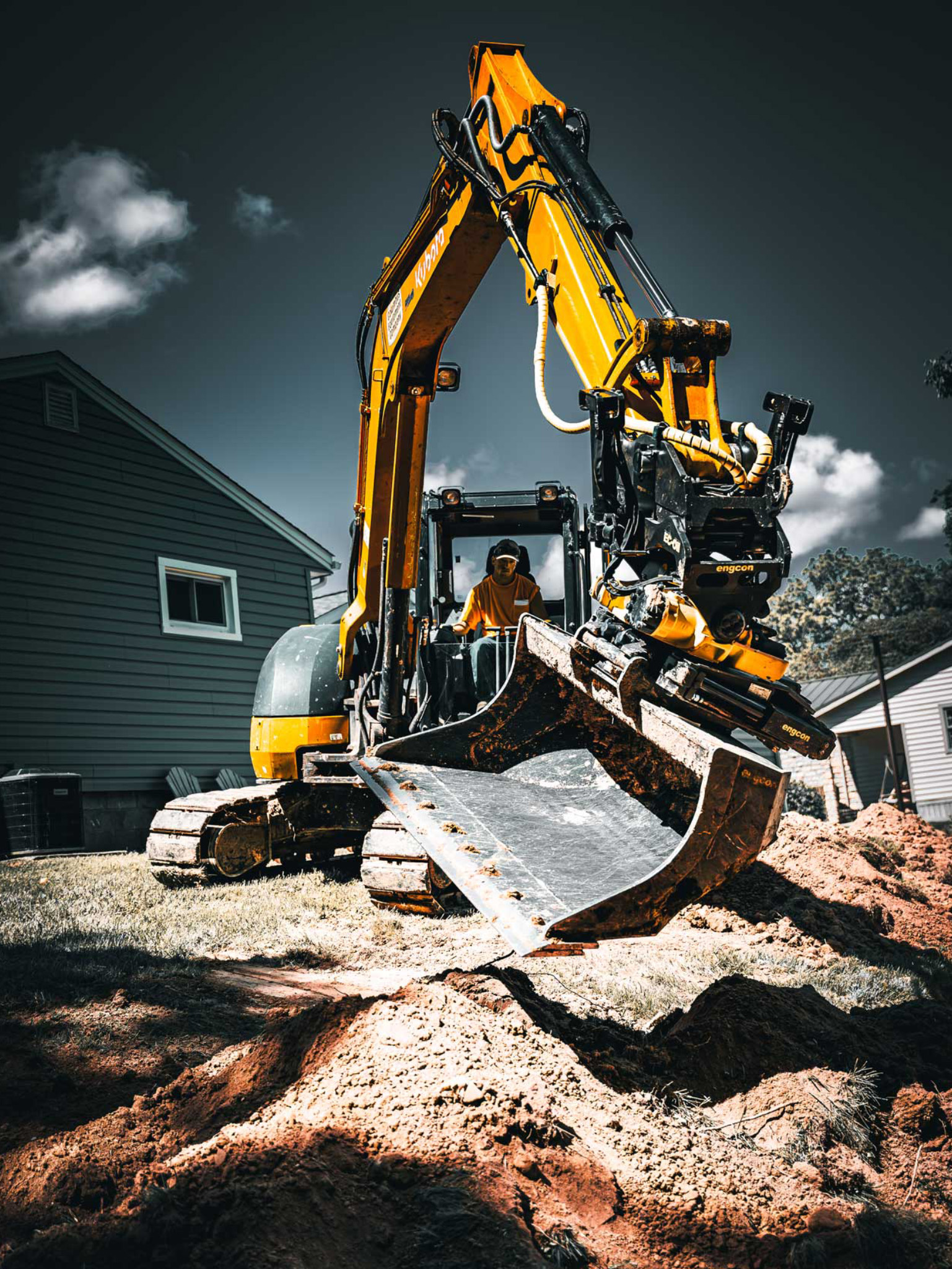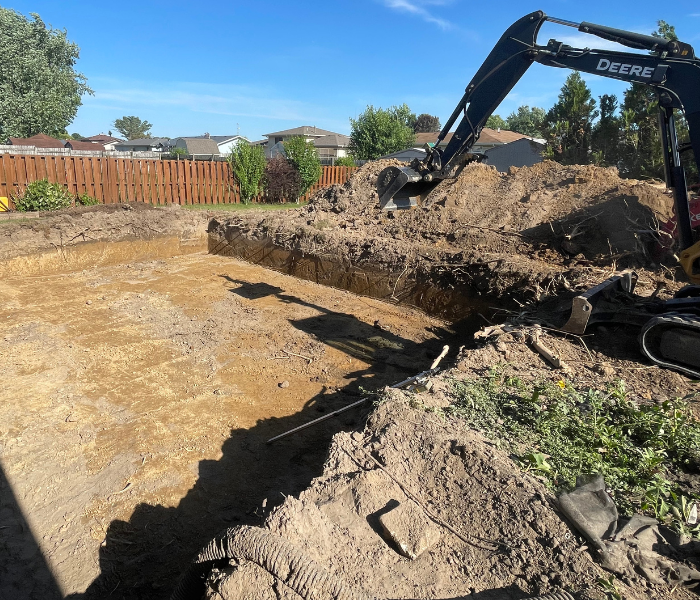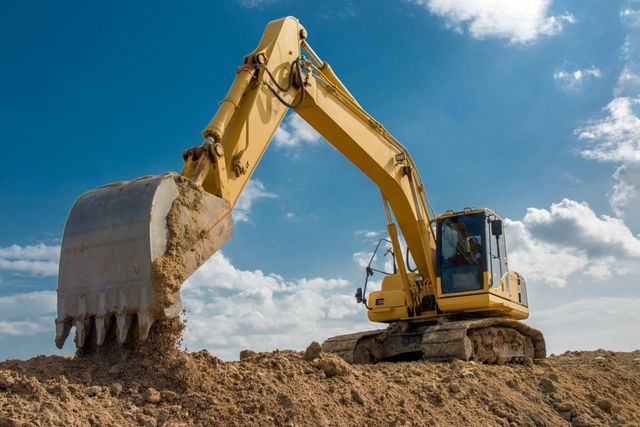Budget-friendly Lancaster Excavation - High Quality Excavation at Competitive Costs
Wiki Article
Thorough Expedition: The Science Behind Superior Excavation Practices
The realm of excavation practices is a domain where science intertwines with craftsmanship to discover the enigmas hidden underneath the planet's surface area. From old hand devices to contemporary hydraulic excavators, the development of excavation strategies has actually been a testament to human ingenuity and technical advancements. What really sets superior excavation practices apart is a deep understanding of geological principles, coupled with the application of sophisticated devices and methods. By checking out the science behind these practices, we can reveal the tricks that exist below our feet and appreciate the accuracy and proficiency that enter into every dig.Development of Excavation Techniques
Throughout background, the development of excavation techniques has actually played a critical function beforehand building practices and historical discoveries. From the rudimentary tools utilized by our forefathers to the advanced machinery employed in modern times, the development of excavation approaches has dramatically transformed how we come close to numerous tasks.In old times, manual labor with fundamental devices such as shovels, pickaxes, and wheelbarrows was the main approach of excavation. This labor-intensive process limited the deepness and range of excavations, typically resulting in sluggish development and limited accessibility to particular sites. However, as human beings progressed, so did the methods and devices used for excavation.
The Industrial Change marked a turning factor in excavation methods with the intro of steam-powered machinery. In modern times, technology plays a crucial function in excavation, with developments like GPS systems, drones, and 3D scanning boosting precision and efficiency in the field.
Role of Innovation in Excavation

The integration of advanced modern technology has actually fundamentally changed the field of excavation, enhancing precision and efficiency to unprecedented degrees. One of the vital technological developments that has actually significantly affected excavation techniques is the utilization of general practitioner systems. These systems permit precise mapping of excavation websites, allowing operators to accurately situate below ground utilities and structures. Additionally, using telematics in excavation equipment has allowed real-time surveillance of device performance, bring about aggressive maintenance and boosted operational performance.
Moreover, the development of 3D modeling and simulation software program has streamlined the preparation procedure for excavation tasks. Operators and engineers can currently picture the entire excavation process before breaking ground, recognizing prospective challenges and enhancing workflow. Combined with this, the execution of drones in excavation activities has facilitated airborne surveys, volumetric measurements, and website examinations with unparalleled rate and accuracy.
Geological Concepts in Excavation
An understanding of geological concepts is necessary for making certain the architectural integrity and stability of excavation websites. Geological factors play an important duty in figuring out the expediency and safety of excavation projects (lancaster excavation). One essential geological principle to think about is the sort of dirt or rock present at the site. Different soil kinds, such as clay, sand, or crushed rock, have varying degrees of stability and need various excavation methods. Natural soils like clay might need additional assistance to stop collapses, while sandy soils might be susceptible to erosion throughout excavation.Furthermore, the geological framework of the location, consisting of mistakes, cracks, and rock formations, have to be very carefully evaluated to recognize prospective threats and difficulties. Digging deep into near fault lines or unpredictable rock formations can bring about instability and prospective threats. By carrying out thorough geological studies and evaluation, excavators and designers can create techniques to minimize risks and make sure the successful completion of excavation jobs. Inevitably, integrating geological concepts right into excavation practices is critical for achieving risk-free, reliable, and sustainable results.

Latest Devices for Excavation
In the world of excavation techniques, contemporary developments in devices have revolutionized the performance and precision of excavation processes. These drones can supply comprehensive airborne studies of excavation sites, using real-time data on topography and possible threats.One more cutting-edge device getting popularity is the application of 3D printing technology for developing custom excavation tools. This permits for the manufacturing of specialized tools that are tailored to the certain requirements of a task, boosting performance and reducing downtime.
In addition, improvements in materials scientific research have caused the growth of stronger and a lot more durable excavation tools. lancaster trenching. Tungsten carbide-tipped excavator add-ons, for instance, deal premium performance in difficult ground problems, boosting productivity on-site
Science's Effect on Excavation Practices

Additionally, advancements in products science have actually caused the development of stronger, extra resilient excavation devices and devices. As an example, using composite materials in shovels and miners has enhanced their efficiency and durability, inevitably enhancing performance on excavation sites. In addition, scientific research study on dirt mechanics and geotechnical design has actually given valuable insights right into soil habits, permitting excavation professionals to make educated choices concerning excavation techniques and dirt stablizing techniques. On the whole, science continues to drive technology and improvement in excavation methods, making excavation tasks more efficient, affordable, and sustainable.

Conclusion
To conclude, the advancement of excavation methods has been greatly affected by improvements in technology and a much deeper understanding of geological principles. The most up to date devices and devices used in excavation have actually enhanced efficiency and accuracy in the field. The application of clinical knowledge has significantly boosted excavation methods, resulting in more efficient and sustainable techniques for excavating different sorts of materials.In the realm of excavation techniques, modern developments in tools have actually changed the effectiveness and precision of excavation processes. By leveraging scientific concepts, the excavation sector has been able to significantly boost effectiveness, accuracy, and safety and security in excavation procedures. GPR allows excavation groups to non-invasively scan and map subsurface structures, energies, and prospective hazards, allowing them to prepare excavation tasks with higher precision and lowered danger of accidents.
Furthermore, scientific study on soil mechanics and geotechnical design has provided useful insights right into soil actions, dump truck companies in ohio allowing excavation specialists to make educated decisions regarding excavation techniques and soil stablizing strategies. Generally, scientific research continues to drive innovation and enhancement in excavation techniques, making excavation jobs extra effective, cost-efficient, and sustainable.
Report this wiki page